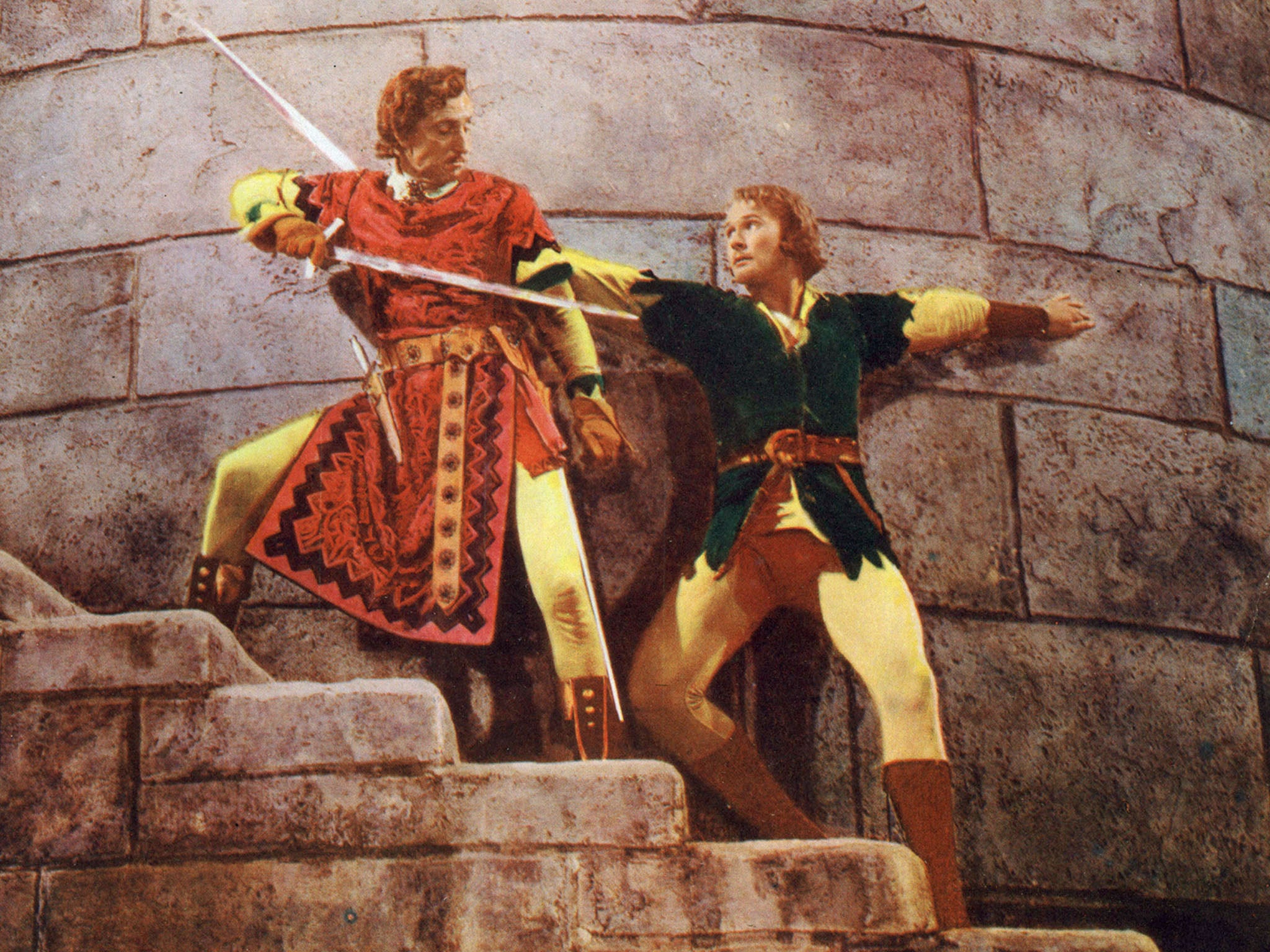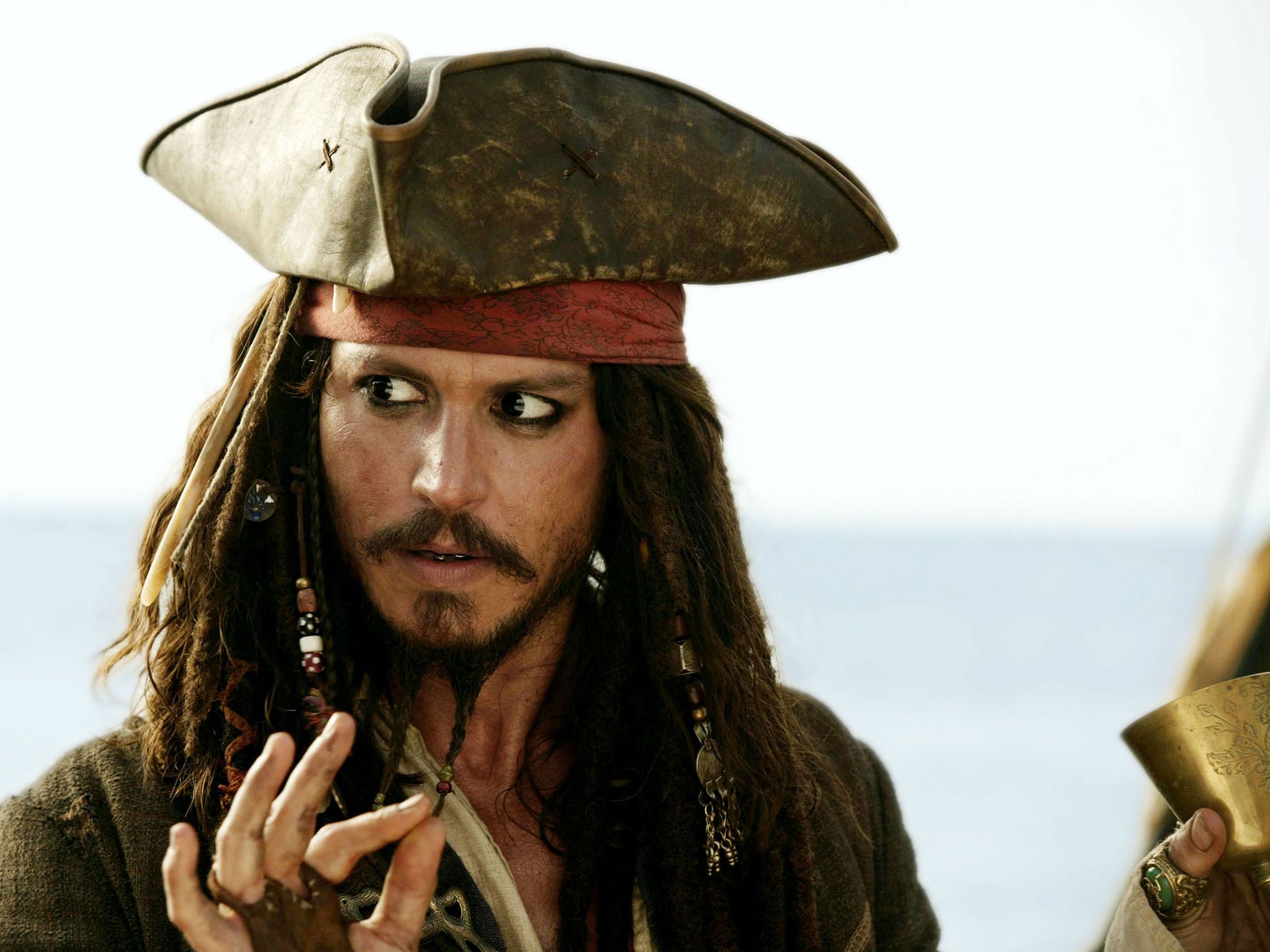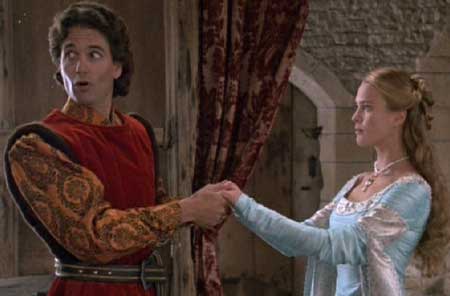Adventures of Robin Hood at 80: The 10 greatest swashbuckling movies
The big screen was made for epic swordfights where the baddie gets his comeuppance at the hands of the handsome hero. From Robin Hood and Zorro to pirates of the Sparrow, Blood and Crimson variety, Graeme Ross chooses his favourite examples of the genre

Your support helps us to tell the story
From reproductive rights to climate change to Big Tech, The Independent is on the ground when the story is developing. Whether it's investigating the financials of Elon Musk's pro-Trump PAC or producing our latest documentary, 'The A Word', which shines a light on the American women fighting for reproductive rights, we know how important it is to parse out the facts from the messaging.
At such a critical moment in US history, we need reporters on the ground. Your donation allows us to keep sending journalists to speak to both sides of the story.
The Independent is trusted by Americans across the entire political spectrum. And unlike many other quality news outlets, we choose not to lock Americans out of our reporting and analysis with paywalls. We believe quality journalism should be available to everyone, paid for by those who can afford it.
Your support makes all the difference.Eighty years ago this month, Warner Brothers’ The Adventures of Robin Hood was released. An instant classic and the definitive version of the Robin Hood legend, the film sealed Errol Flynn’s status as the greatest swashbuckler of the silver screen and has barely dated at all.
The heyday of the swashbuckler stretches from the silent era to the early 1950s, and was a huge favourite of the Saturday matinee crowd thanks to their boys’ own quality and tales of derring-do, before falling out of favour until a resurgence of sorts in the new millennium.
It goes without saying that by their very nature, swashbuckling movies should represent old-fashioned values and feature copious amounts of sword fighting and swinging from chandeliers. It’s also obligatory for pirates to do a lot of swinging in the rigging of galleons. Leading men should be handsome, valiant and athletic, leading ladies beautiful and feisty, villains dastardly, but with enough charm about them to elicit sympathy on occasion.
The sets don’t always have to be lavish and authentic but it helps, and as long as there is plenty of exciting action, the plot needn’t be too taxing on the brain. A memorable soundtrack can really enhance a swashbuckler. Several of the entries on this list would be poorer without their scores.
The selection below embodies all of these qualities and more, so, with apologies to fans of the silent era (and Douglas Fairbanks Sr in particular) not represented here, this is my list of the 10 greatest swashbuckling movies.
10. The Mask of Zorro (1998), directed by Martin Campbell
Spirited reboot of the Zorro legend with Steven Spielberg on board as executive producer which found its niche as a summer blockbuster. Anthony Hopkins is the original Zorro who escapes from prison after 20 years and trains young thief Antonio Banderas to inherit his mantle. Along the way, Banderas and Hopkins’ long-lost daughter (a zesty Catherine Zeta-Jones) fall for one another as the two Zorros avenge the wrongs of the past.
At 137 minutes long, The Mask of Zorro is in danger of outstaying its welcome, but director Campbell injects some old-fashioned panache into proceedings with terrific stunts and swordplay that keep the action rollicking along, and there’s some spicy humour as well in the chemistry between Banderas and Zeta-Jones.
9. The Crimson Pirate (1952), Robert Siodmak
Burt Lancaster had made his name in film noir, but with The Crimson Pirate and its equally exhilarating predecessor, 1950’s The Flame and the Arrow, he called upon his earlier career as a circus acrobat to don the mantle of natural successor to Fairbanks Sr and Flynn.
This is the Lancaster of myth, all teeth, hair and bulging muscles as he and childhood friend Nick Cravat romp through a colourful mix of thrills, stunts and tongue-in-cheek, knockabout humour.
No expense was spared by producer/star Lancaster, who was approaching the height of his considerable power and star status in Hollywood, with the Gulf of Naples standing in for the Caribbean. The Crimson Pirate manages to be both a homage to and parody of the classic swashbuckler and must surely have served as some sort of inspiration for the Pirates of the Caribbean franchise. Perfect entertainment for a wet weekend afternoon and aimed squarely at the box office by Lancaster.
8.The Pirates of the Caribbean: The Curse of the Black Pearl (2003), Gore Verbinski

Like The Mask of Zorro, The Curse of the Black Pearl is another modern swashbuckler that is a good half-hour too long, clocking in at a humongous 143 minutes, but it’s a fun ride most of the way, just like the theme park attraction and, (one likes to think) the great pirate swashbucklers of Hollywood’s golden age that inspired it. The pirate movie genre had been in the doldrums for decades, becalmed by changing movie trends and the lack of a star with the chutzpah to carry such a film.
Enter Disney and Keith Richards, sorry, Johnny Depp, with his star turn as the inelegantly wasted Captain Jack Sparrow and so began one of the most successful movie franchises in history.
As brilliant and funny as he is in The Curse of the Black Pearl, Depp isn’t quite the whole show however, with Geoffrey Rush’s roistering turn as the villainous Barbarossa, captain of the undead, a feisty Keira Knightley, and some impressive special effects.
The epitome of the summer blockbuster, The Curse of the Black Pearl took over $650m worldwide, spawning four sequels (enough already!) with varying results, but grateful thanks from all swashbuckling fans for resurrecting the genre.
7. Scaramouche (1952), George Sidney
After making his name at the Gainsborough and Rank studios, Stewart Granger crossed the Atlantic to try his luck at the end of the 1940s, and Scaramouche, filmed in stunning Technicolor, ranks as the best film he made in his decade in Hollywood.
Based on Rafael Sabatini’s novel set in 18th-century France, Granger plays the devil-may-care hero forced to masquerade in a theatre troupe as the comical figure of Scaramouche while he trains as an expert swordsman to exact revenge on the villainous nobleman who killed his friend.
Scaramouche gave Granger plenty of opportunity to show off his fencing prowess, most notably in the terrific seven-minute climactic duel with Mel Ferrer which followed the two protagonists through a theatre over balconies, down huge staircases and onto the stage, destroying prop after prop as Scaramouche wins the day and leading lady Janet Leigh.
Personally I always thought Scaramouche was mad not to opt for the fiery and lustful Eleanor Parker rather than the rather staid Leigh. Still, in an amusing coda, Parker’s character did end up with Napoleon Bonaparte.
6. The Duellists (1977), Ridley Scott
There are no pirates or charismatic outlaws in Ridley Scott’s feature debut but there are more swordfights than you can shake a rapier at in a visually stunning adaption of the Joseph Conrad short story about a long-running feud between two French Army officers during the Napoleonic Wars.
The Duellists’ strong visual look was clearly patterned on Stanley Kubrick’s Barry Lyndon and with sumptuous production values and a literate script, it is a thrilling and cerebral spectacle – the thinking man’s swashbuckler if you like.
5.The Mark of Zorro (1940), Rouben Mamoulian
The character of masked vigilante Zorro has featured many times on television and the big screen, but this is the best version of the story, a rollicking remake of the original Douglas Fairbanks Sr 1920 silent movie.
Tyrone Power excels as the privileged, foppish Diego who masquerades as the dashing avenger of evil who aids the poor and the oppressed in the Spanish-ruled California of the 1800s, carving his Z-for-Zorro calling card with his sword wherever he rights wrongs.
Power could hold his own as a swashbuckler as he proved a couple of years later in The Black Swan, and in Zorro he was up against Basil Rathbone, reputedly one of Hollywood’s finest swordsmen who, not for the first time, has to die on screen in a spectacular duel for the sake of the plot.
Alfred Newman’s score is famous and memorable and Linda Darnell, aged just 17 and the archetypal child of a showbiz mother, shines luminously.
4. Captain Blood (1935), Michael Curtiz
Robert Donat, fresh from his success in The Count of Monte Cristo, turned down the title role and unknown 26-year-old Tasmanian-born actor Errol Flynn stepped in like... well, Flynn to give a star-making performance as the doctor forced to become a pirate of the Caribbean.
Along the way, Flynn is bought as a slave by Olivia de Havilland, marking the beginning of one of the great romantic on-screen pairings (they would make eight films together), plunders the seven seas and teams up with (and kills) cut-throat French buccaneer Basil Rathbone in a thrilling swordfight on the beach.
Rathbone – all tumbling ringlets and Gallic sneers – almost upstages Flynn, but it was Flynn who proved himself the true heir to Fairbanks Sr, hitherto, cinema’s greatest swashbuckler.
Director Curtiz was one of the great craftsmen of Hollywood’s golden age, teaming up with Flynn on a dozen movies and directing classics such as Casablanca and The Adventures of Robin Hood, again with Flynn.
It was Hungarian emigre Curtiz who was inadvertently responsible for the title of David Niven’s second volume of autobiography (Bring on the Empty Horses) when calling for riderless horses in his broken English on the set of 1936’s The Charge of the Light Brigade.
3. The Princess Bride (1987), Rob Reiner

An enchanting fairy tale that appeals to children and adults alike, and justly celebrated for William Goldman’s deftly humorous script from his own novel. A love letter to Hollywood’s golden age of swashbucklers, The Princess Bride has it all.
There’s love and romance, monsters and giants, heroes and villains, and dazzling swordplay aplenty. And as you would expect in a Rob Reiner film, endlessly quotable dialogue is par for the course (”You rush a miracle man, you get rotten miracles”, “Inconceivable!” etc).
Surprisingly, The Princess Bride didn’t do that well at the box office on release but has since become a beloved cult classic.
2. The Prisoner of Zenda (1937), John Cromwell
The perfect example of how to film a well-loved novel and do it brilliantly, this is by far the best of umpteen versions of Anthony Hope’s famous adventure novel set in the fictional country of Ruritania.
Lavishly produced by David O Selznick and splendidly cast with Ronald Colman in the twin roles of the imprisoned king and his English cousin doppelganger, a beautiful and regal Madeleine Carroll as Princess Flavia and Douglas Fairbanks Jr, following in his father’s footsteps as a renowned swashbuckler, stealing the film as the dastardly, yet compulsively likeable villain, Rupert of Hentzau.
1. The Adventures of Robin Hood (1938), Michael Curtiz and William Keighley
Has there ever been a movie so perfectly cast and executed with so much conviction, professionalism, and joie de vivre? Shot in ravishing Technicolor, with magnificently authentic sets, The Adventures of Robin Hood encapsulates the magic of cinema, bringing 12th-century England to Hollywood with sunny California glades standing in for Sherwood Forest in a wonderful blend of action, drama, romance and humour that has rarely been bettered.
Errol Flynn is at the peak of his roguish charm as the silver screen’s greatest Robin Hood and is once more paired with Olivia de Havilland as an impossibly beautiful Maid Marian.
Claude Rains purrs insidiously as Prince John, and Basil Rathbone as his sidekick is fated yet again to fall to the hero in the wonderfully choreographed and brilliantly executed swordfight with Flynn on the castle staircase, their shadows dancing on the walls – and yes, that is Roy Rogers’ horse Trigger in an early supporting role as Maid Marian’s mount.
A winner of three Oscars, including one for the majestic score from Erich Wolfgang Korngold, which sets the tone of the film from the rousing opening fanfare and then vividly illustrates every thrust and parry of Flynn’s sword, every arrow thudding into its target, every winsome glance from de Havilland.
The Adventures of Robin Hood at 80 years old, remains the perfect example of Hollywood’s supreme artistry in the days of the much maligned studio system, not just the best of its kind, but one of the greatest films ever made.
Join our commenting forum
Join thought-provoking conversations, follow other Independent readers and see their replies
Comments